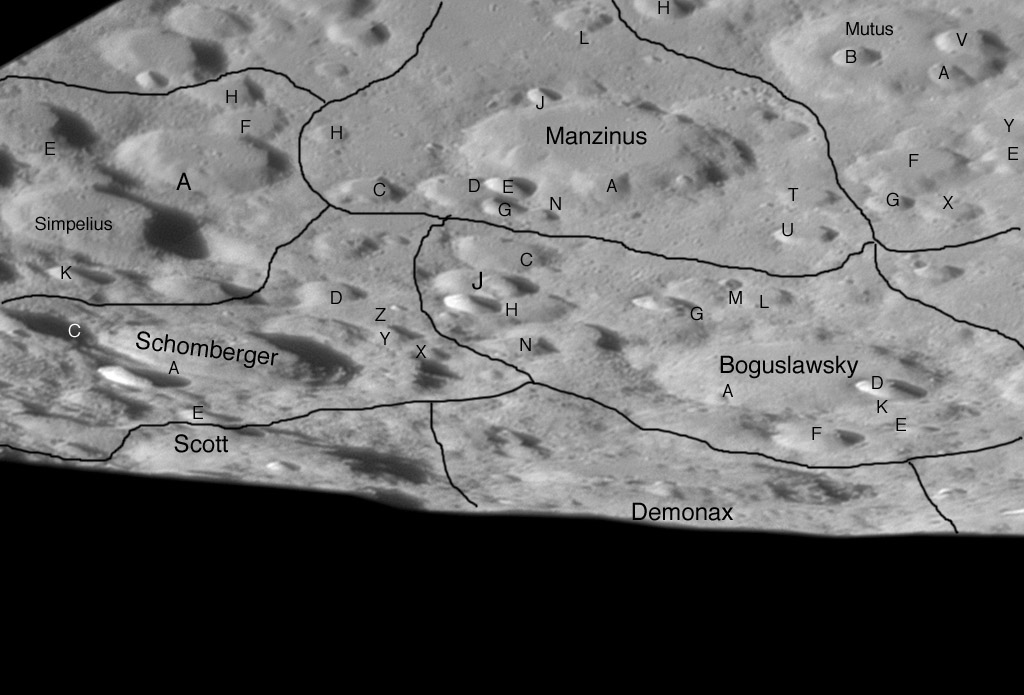
image by [1]Jérôme Grenier with annotation by Chuck Wood
Every piece of the night sky falls within one of 88 constellations. Each star has a designation based upon its constellation - there is order and clarity in humanity’s mapping of the universe. But the Moon is a different matter. The dark areas of the Moon have names (the maria) and the light areas previously did, but nomenclature for most features is linked to the nearest named crater. For example, Schomberger A is a lettered crater near the named crater Schomberger. Unlike the straight boundaries of constellations, the boundaries associated with a field of lettered craters is irregular and not marked on any map known to me. On Jérôme’s image of a region near the lunar South Pole I have outlined the areas associated with each named crater. It has been difficult to make this map because of the uncertainty of identification of various lettered craters in this limb region. The job has been made more difficult because the three nomenclature authorities I used (Rükl’s Atlas of the Moon, Bussey and Spudis’ Clementine Atlas of the Moon, and the Arthur and others System of Lunar Craters (SLC)) are not consistent. Rükl does not show all of the lettered craters in the other two sources, and the Clementine Atlas does not always unambiguously indicate which is the lettered crater. I have relied on the SLC because it was the last document whose lettered craters were accepted as official by the IAU, and because I worked on it! But if you look closely at Jérôme’s image, which is better quality than nearly all that we used in the 1960s while compiling the SLC, you will notice that some lettered craters (e.g. Manzinus A) probably are too ill-defined to warrent a designation, and other conspicuous craters (the large one between Simpelius and Schomberger) lack letters. The fact that I had to spend many hours trying to correctly identify the craters on this one image indicates that existing lunar nomenclature (and references) is not effective at providing readily identifiable landmarks. The entire system of lunar nomenclature - lettered craters, Greek-lettered hills and mountains, and numbered rilles - seriously needs review.
Technical Details:
April 26, 2007, 22h 19m UT with a bad seeing. Orion Optics (UK) OMC 12″ + barlow 2x + IR pass filter + DMK 31AF03; stacked in Registax; mosaic of four images.
Related Links:
Rükl chart 74
Another view
Yesterday's LPOD: Schiller Times Six
Tomorrow's LPOD: Cloudy Moon
COMMENTS?
Register, Log in, and join in the comments.



